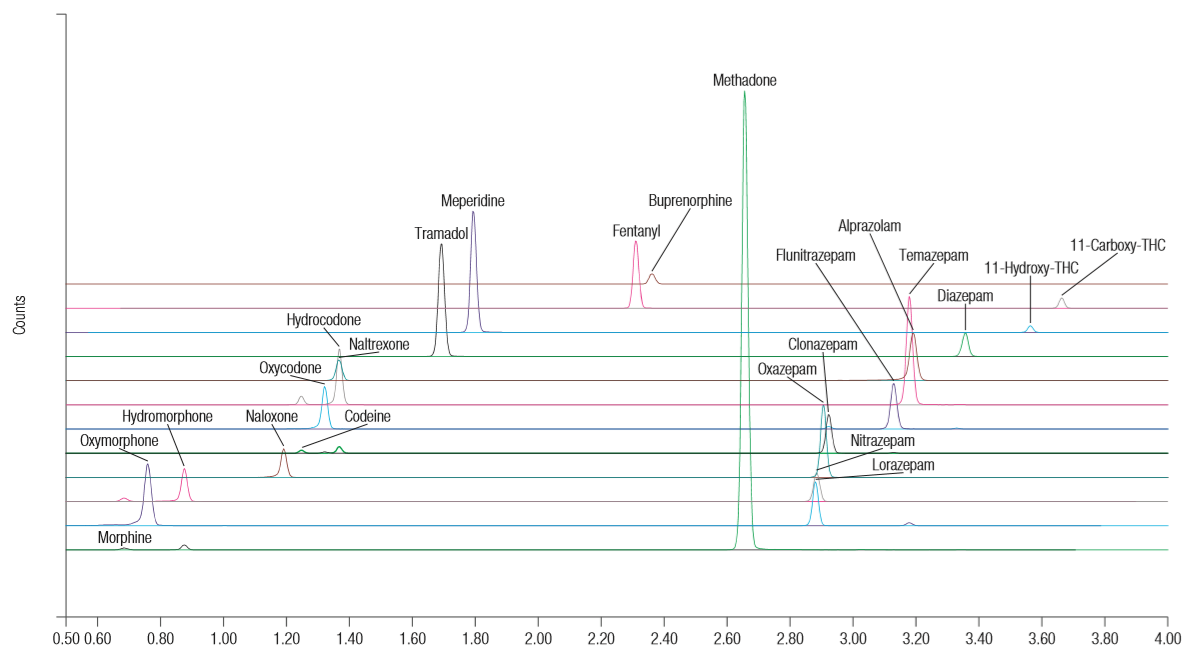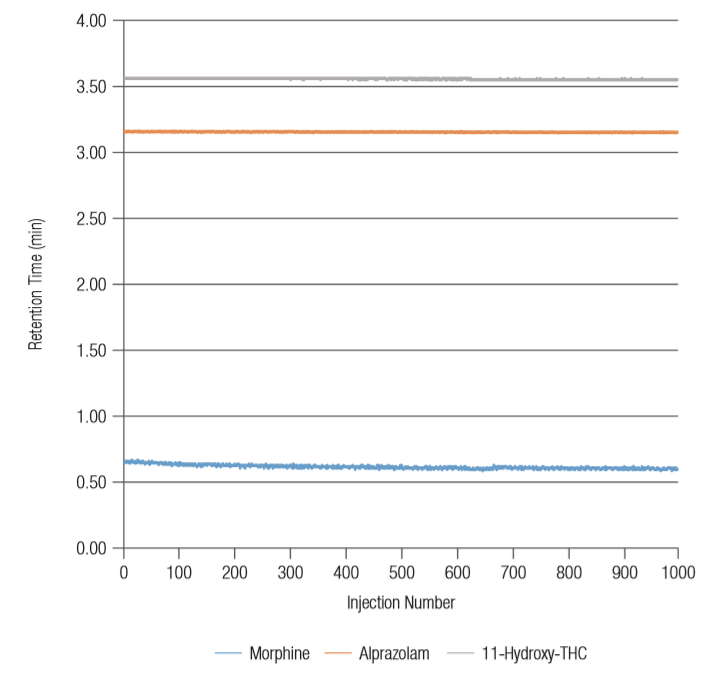Accelerating Screening for Drugs of Abuse With Innovative Liquid Chromatography Solutions

Complete the form below to unlock access to ALL audio articles.
The drug overdose epidemic claimed over 70,000 lives in 2017 in the United States (U.S.) alone, up by around 10 % on the previous year, according to the latest figures from the Centers for Disease Control and Prevention (CDC).
The continued increase in U.S. drug-related deaths over the past decade has been fueled in large part by the abuse of highly potent, synthetic opioids. But while many U.S. states have stepped up monitoring for opioid overdose deaths, evidence suggests that synthetic opioids are increasingly involved in overdose cases attributed to other drugs. Indeed, recent CDC findings reveal that synthetic opioids were involved in almost three-quarters of all cocaine overdoses in 2017, and a growing number of deaths due to psychostimulants such as methamphetamine. To combat this spiraling public health crisis, the CDC has called for more timely and comprehensive screening efforts to inform effective prevention and response strategies.
The scale of the U.S. opioid crisis continues to put forensic toxicology laboratories under intense pressure to meet demanding workloads with limited resources. Furthermore, laboratories must screen for an increasingly broad range of drugs of abuse to comprehensively determine cause of death. Faced with growing caseloads and rising backlogs, laboratories need screening workflows that can process large volumes of samples quickly and efficiently, while accelerating the delivery of accurate and reliable results.
The value of UHPLC for drugs of abuse screening
Ultra high-performance liquid chromatography (UHPLC) has emerged as a powerful tool for drugs of abuse screening. UHPLC offers exceptional chromatographic resolution, supporting the separation of analytes in complex mixtures to improve confidence in results, while enabling fast and efficient analyses that accelerate workflows and maximize productivity.
However, the presence of matrix components in samples is a major challenge for routine screening workflows. Matrix components present in urine samples, for example, can lead to a gradual decrease in column performance – resulting in a loss of resolution, a shifting of retention times, the degradation of peak shapes, damage to instruments from column or equipment blockages. Resolving these issues can require significant maintenance, adversely affecting laboratory productivity and further adding to workload backlogs.
Advances in column chemistry are enhancing the durability of UHPLC workflows for a wide range of challenging matrices. Using innovative chemistry and optimized packing procedures, these advanced columns are helping forensic toxicology laboratories overcome routine screening challenges to accelerate workflows and achieve the highest levels of throughput and productivity.
Innovative biphenyl column chemistries resolving challenging separations
To support the collection of reliable results, drugs of abuse screening workflows must provide excellent peak shape and resolution for a diverse range of compound classes over a wide range of polarities, while delivering adequate separation for structurally similar analytes that have the same or small differences in mass. Opioids, for example, include several isobaric compounds and many more that share closely related structures, all of which must be reliably resolved to eliminate the potential for false positives.
C18 columns are widely used for UHPLC workflows and are able to reliably resolve a wide variety of analytes. However, for the separation of aromatic and more polar analytes, alternative column chemistries can deliver better performance. Solid-core biphenyl UHPLC columns offer complementary selectivity to C18 columns and deliver robust peak resolution across a wide range of analyte polarities. Biphenyl columns are also well suited for resolving isomeric compounds and co-eluting; a particularly important challenge in drugs of abuse workflows. The peak separation of 23 drugs of abuse, spanning a range of compound types including opioids, opiates, benzodiazepine and tetrahydrocannabinoid metabolites, is shown in Figure 1.

Figure 1. The excellent peak resolution achieved using UHPLC allows forensic laboratories to achieve short screening workflows (separation of 23 drugs of abuse in less than 4 minutes using UHPLC).
Accelerating throughput using biphenyl column chemistries
Using columns that provide better peak resolution not only allows laboratories to achieve more reliable results, but also boosts throughput considerably. By optimizing method run times, while maintaining quality of data, biphenyl columns can help forensic laboratories expand the capacity of their workflows and reduce the cost per analysis. The robust separation highlighted in Figure 1 using a commercially available biphenyl column could be achieved in just 4 minutes, with a total cycle time of 5.5 minutes.
In addition to accelerating throughput by enabling shorter run times, biphenyl columns are also helping to increase capacity by minimizing unplanned instrument maintenance and cleaning workflows. The innovative solid-phase chemistry and packing procedures employed in modern biphenyl columns are designed to support more robust and reliable routine performance, even when working with demanding sample matrices such as urine samples. Figure 2 highlights the retention time stability that can be achieved using biphenyl columns for morphine and two other representative drugs of abuse analytes, alprazolam and 11-hydroxy-THC. The percentage coefficient of variation for morphine, alprazolam and 11-hydroxy-THC was 2.49 %, 0.07 % and 0.14 %, respectively.

Figure 2. The latest solid core UHPLC analytical columns based on biphenyl chemistry offer robust retention time stability, even with extended use.
Biphenyl columns are also able to produce consistent peak widths at half height (FWHH) even over large numbers of repeat injections. This workflow robustness is helping laboratories minimize instrument downtime and increase throughput, without compromising on the quality of results.
Accelerating forensic toxicology screening with robust UHPLC workflows
To support the increasing number of cases where drugs of abuse are suspected, forensic toxicology laboratories need robust screening workflows they can depend on. The latest UHPLC analytical columns, based on innovative biphenyl chemistries, offer exceptional peak resolution and tolerate a wide range of demanding sample matrices. By minimizing disruptive instrument downtime and improving measurement consistency, these columns are helping forensic toxicology laboratories boost throughput, tackle backlogs and accelerate the delivery of accurate and reliable results.

